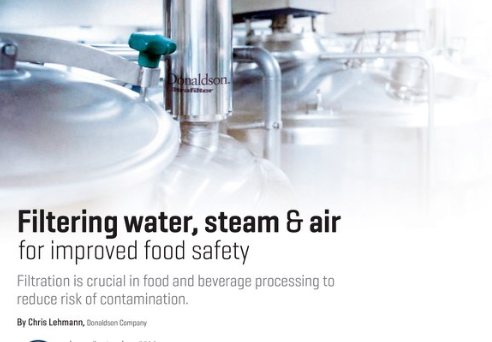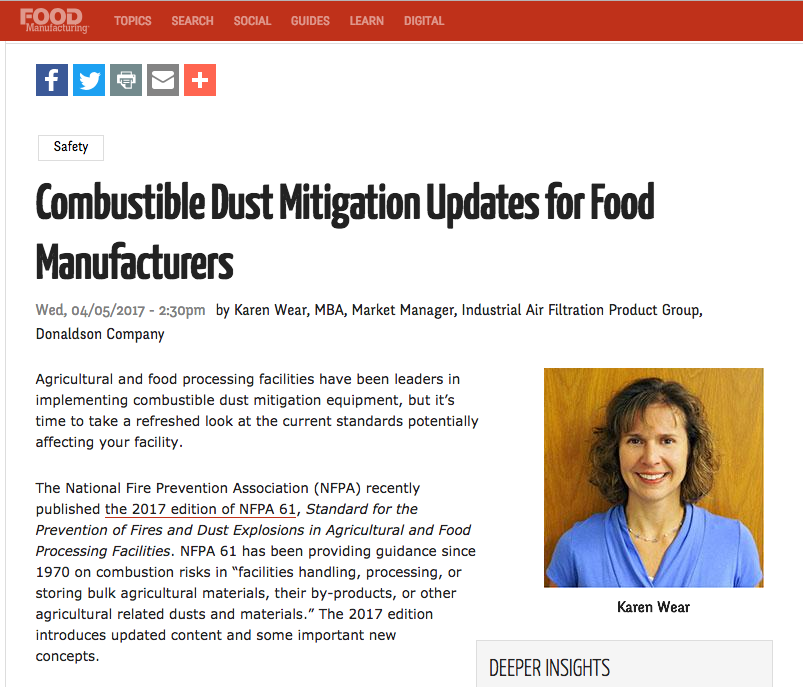A Nielsen study says earned media coverage is the most effective source of information for advancing consumers through all stages of purchasing.
If your organization needs a stronger reputation with decisionmakers, media relations is a great investment. A Nielsen study says earned media coverage is the most effective source of information for advancing consumers through all stages of purchasing. In fact, Channel Futures lays out five strategic reasons to complement digital marketing with media coverage:
- create third-party validation,
- develop fresh content,
- reinforce brand with influencers,
- advocate your point of view, and
- generate leads.
Trade publications, in particular, can be low-hanging fruit. While they may not look glamorous, journals such as Plant Engineering, The Fabricator, and Processing are authoritative in their industries and have print readership north of 70,000, plus online visitors. Trade editors are open to collaborating with brand subject matter experts (SMEs) who are reliably on-time with helpful articles or interviews. Over the past 18 months, we’ve placed 40 expert-bylined articles for a B-to-B client, in addition to shorter news releases.

Here’s the rhythm we’ve developed with client Donaldson Company, Inc. in media relations, that might work for your media placement program:
1. Identify topics: Every industry has its trends, regulations, and controversies. Sit down annually with your business unit engineers and product developers, and identify the four to six “hot topics” your experts can credibly address. Ask yourself what time, money, or quality problems your product or service can solve, and focus on messages that can help.
2. Study editorial calendars: Now that you’ve listed your “sweet-spot” topics, find out when key publications are scheduled to cover them. Editors post their calendars online in late fall for the coming year. Year-end is an ideal time to discover new opportunities and be first in line with editorial offers for the next calendar year.
3. Secure commitments: Never mass-mail the media. Offer an exclusive article to one editor at a time. Mention the specific match you’ve scoped out on their calendar. Keep the pitch brief: a headline, reader takeaways, and an author bio. Assure them your article will be educational, not commercial. Linking to previous work by the author helps. Editors will tell you if they want a more detailed outline. Sometimes in this process, the publication will decide to write its own article, based on an interview with your expert.
 4. Write to specs. Once an editor accepts, they’ll provide writing guidelines and a deadline, usually two months before publication. Your subject matter expert can either hammer out a draft, or work with a ghost-writer you enlist. A recorded interview works well, along with background material. Be sure to plan graphics from the get-go. These are always required and can take time to design or to clear with permission.
4. Write to specs. Once an editor accepts, they’ll provide writing guidelines and a deadline, usually two months before publication. Your subject matter expert can either hammer out a draft, or work with a ghost-writer you enlist. A recorded interview works well, along with background material. Be sure to plan graphics from the get-go. These are always required and can take time to design or to clear with permission.
5. Be easy to work with. Editors will make revisions and send you a galley for final approval, so be ready for a tight turnaround. Respect their input and deadlines. If you make life easy for a busy editor, they’ll reach out to you when they need material—and even recommend you to sister publications in their publishing family.
6. Multi-purpose! Plan other ways to leverage the original article, remembering that copyright law excludes a word-for-word re-run. Rework it as a Q&A for another outlet; develop slides and offer the content as a webinar; create a white paper and PPC campaign; propose your author and topic to a trade show calling for speakers. Using the content multiple ways stretches the value of your investment—and starting with a media version first will naturally discipline your content to be consumer- and benefit-focused. Our client has populated four new website sections with copy originally developed as placements.

Examples of repurposed media articles are here on Donaldson’s website:
Ensuring sterile dairy processing.
Selecting the right dust collector.
Bylined trade articles by your experts can elevate your brand and open doors. Stick with it and you’ll see momentum really build in years two, three, and forward. You’ll also have an efficient content engine for your website, social media marketing, and trade show presence. If you’d like help exploring this potential for your organization, DKY would love to help!
